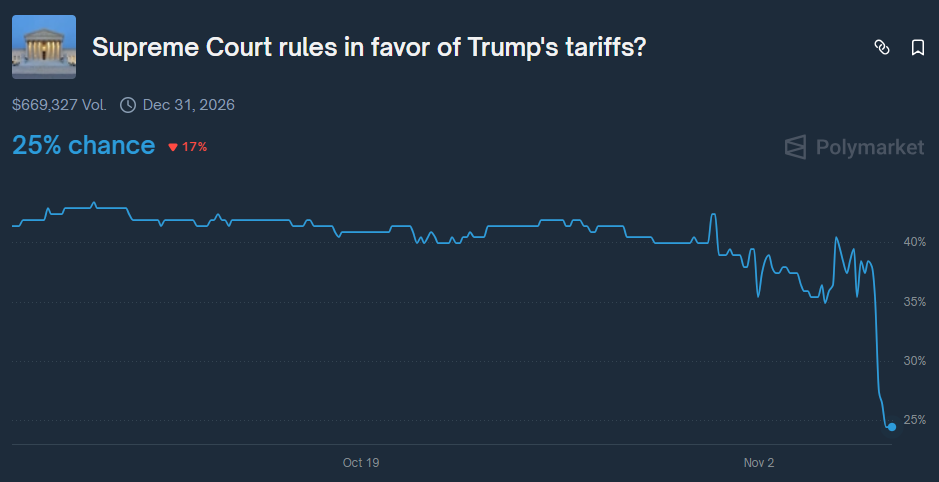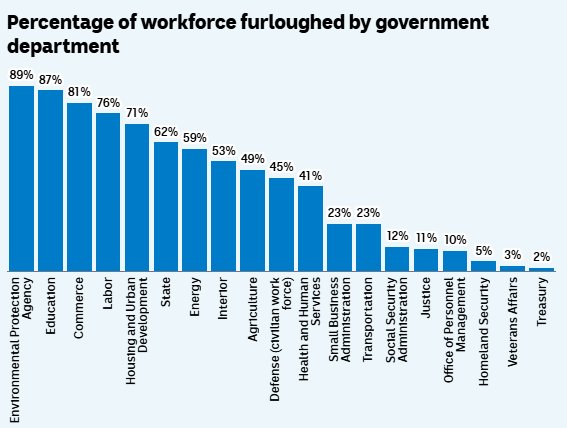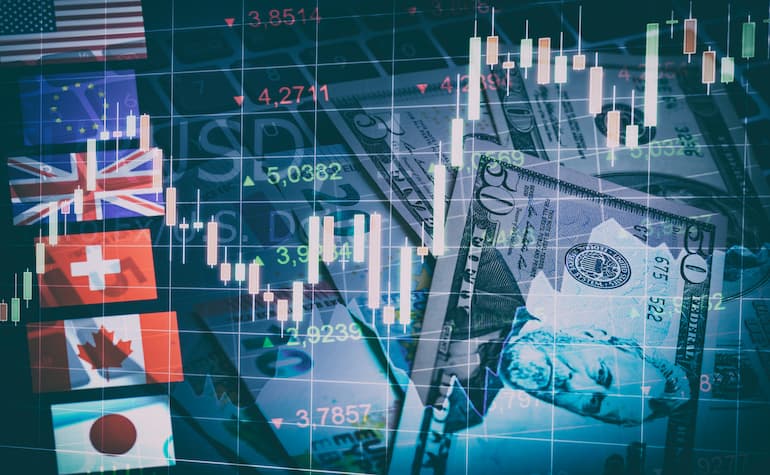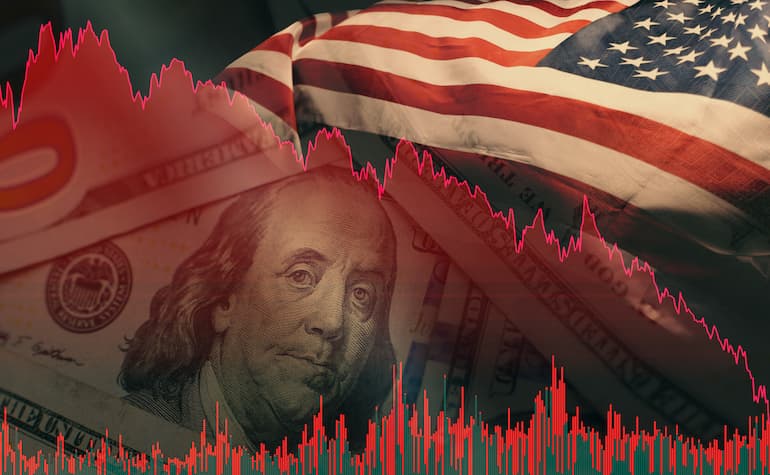市场资讯及洞察

Artificial intelligence stocks have begun to waver slightly, experiencing a selloff period in the first week of this month. The Nasdaq has fallen approximately 2%, wiping out around $500 billion in market value from top technology companies.

Palantir Technologies dropped nearly 8% despite beating Wall Street estimates and issuing strong guidance, highlighting growing investor concerns about stretched valuations in the AI sector.
Nvidia shares also fell roughly 4%, while the broader selloff extended to Asian markets, which experienced some of their sharpest declines since April.
Wall Street executives, including Morgan Stanley CEO Ted Pick and Goldman Sachs CEO David Solomon, warned of potential 10-20% drawdowns in equity markets over the coming year.
And Michael Burry, famous for predicting the 2008 housing crisis, recently revealed his $1.1 billion bet against both Nvidia and Palantir, further pushing the narrative that the AI rally may be overextended.
As we near 2026, the sentiment around AI is seemingly starting to shift, with investors beginning to seek evidence of tangible returns on the massive investments flowing into AI, rather than simply betting on future potential.
However, despite the recent turbulence, many are simply characterising this pullback as "healthy" profit-taking rather than a fundamental reassessment of AI's value.
Supreme Court Raises Doubts About Trump’s Tariffs
The US Supreme Court heard arguments overnight on the legality of President Donald Trump's "liberation day" tariffs, with judges from both sides of the political spectrum expressing scepticism about the presidential authority being claimed.
Trump has relied on a 1970s-era emergency law, the International Emergency Economic Powers Act (IEEPA), to impose sweeping tariffs on goods imported into the US.
At the centre of the case are two core questions: whether the IEEPA authorises these sweeping tariffs, and if so, whether Trump’s implementation is constitutional.
Chief Justice John Roberts and Justice Amy Coney Barrett indicated they may be inclined to strike down or curb the majority of the tariffs, while Justice Brett Kavanaugh questioned why no president before Trump had used this authority.
Prediction markets saw the probability of the court upholding the tariffs drop from 40% to 25% after the hearing.

The US government has collected $151 billion from customs duties in the second half of 2025 alone, a nearly 300% increase over the same period in 2024.
Should the court rule against the tariffs, potential refunds could reach approximately $100 billion.
The court has not indicated a date on which it will issue its final ruling, though the Trump administration has requested an expedited decision.
Shutdown Becomes Longest in US History
The US government shutdown entered its 36th day today, officially becoming the longest in history. It surpasses the previous 35-day record set during Trump's first term from December 2018 to January 2019.
The Senate has failed 14 times to advance spending legislation, falling short of the 60-vote supermajority by five votes in the most recent vote.
So far, approximately 670,000 federal employees have been furloughed, and 730,000 are currently working without pay. Over 1.3 million active-duty military personnel and 750,000 National Guard and reserve personnel are also working unpaid.

SNAP food stamp benefits ran out of funding on November 1 — something 42 million Americans rely on weekly. However, the Trump administration has committed to partial payments to subsidise the benefits, though delivery could take several weeks.
Flight disruptions have affected 3.2 million passengers, with staffing shortages hitting more than half of the nation's 30 major airports. Nearly 80% of New York's air traffic controllers are absent.
From a market perspective, each week of shutdown reduces GDP by approximately 0.1%. The Congressional Budget Office estimates the total cost of the shutdown will be between $7 billion and $14 billion, with the higher figure assuming an eight-week duration.
Consumer spending could drop by $30 billion if the eight-week duration is reached, according to White House economists, with potential GDP impacts of up to 2 percentage points total.


US business software company Intuit Inc. (NASDAQ: INTU) announced the latest financial results for first quarter of fiscal 2024 after the closing bell in the US on Tuesday. Company overview Founded: 1983 Headquarters: Mountain View, California, United States Number of employees: 18,200 (2023) Industry: Enterprise software Key people: Sasan Goodarzi (CEO), Scott Cook (Chairman) The results Intuit reported revenue of $2.978 billion for the three months ending October 31 st (up by 15% from the same period last year), which was above analyst estimate of $2.878 billion. Earnings per share also topped analyst estimates at $2.47 per share (up by 49% year-over-year) vs. $1.978 per share expected.
The company reiterated full fiscal year 2024 revenue guidance of between $15.890 billion to $16.105 billion, which would represent growth of between 11% to 12% year-over-year. CEO commentary "We had a very strong first quarter, starting our fiscal year with momentum," CEO of Intuit, Sasan Goodarzi said in a letter to investors. "With data and AI core to our strategy, we're accelerating innovation across our global financial technology platform to power the prosperity of consumers and small businesses," Goodarzi added. Stock reaction The stock was up by 0.68% at $565.07 a share on Tuesday.
Share rose by around 1% in the after-hours trading as the latest results were announced. Stock performance 1 month: +14.17% 3 months: +5.33% Year-to-date: +45.18% 1 year: +48.82% Intuit stock price targets Wells Fargo: $575 Bank of America: $580 Morgan Stanley: $525 KeyBanc: $600 JP Morgan: $563 Intuit Inc. is the 71 st largest company in the world with a market cap of $158.18 billion. You can trade Intuit Inc. (NASDAQ: INTU) and many other stocks from the NYSE, NASDAQ, HKEX, ASX, LSE and DE with GO Markets as a Share CFD.
GO Markets now offers pre-market and after-market trading on popular US Share CFDs. Trade the pre-market session: 4:00am to 9:30am, normal session, and after-market session: 4:00pm to 8:00pm, Eastern Standard Time. Why trade during extended hours?
Volatility never sleeps. Trade over earnings releases as they happen outside of main trading hours Reduce your risk and hedge your existing positions ahead of a new trading day Extended trading hours on popular US stocks means extended opportunities Sources: Intuit Inc., TradingView, MarketWatch, TipRanks, Benzinga, CompaniesMarketCap, FactSet


USD – The US dollar index was ultimately firmer in a choppy session where DXY hit a low of 103.18 in the APAC session only to reverse course later hitting a high of 103.71 in the US session. A sour risk environment after some misses in US retail earnings and traders getting long before the FOMC minutes seem to be the key drivers. Reaction to the minutes ended up being muted with a slight pop that retraced in quick time.
DXY now sandwiched between its 200-day SMA and key support level at 103.60 heading into the APAC session. AUD – AUDUSD got off to a flier in the APAC session after what was seen as hawkish RBA minutes released early in the session. The Aussie did fade later as it failed to breach key technical resistance at the 200-day SMA at 0.6590 and finished the session flat.
Key levels to watch today will be 0.6524 to the downside which was the top end of its recent range and the aforementioned 200-day SMA to the upside, Aussie traders will have comments from Governor Bullock later today to watch out for. EUR GBP EUR was the G10 laggard with EURUSD hitting a low of 1.0901 before finding some support at the big figure. ECB president Lagarde did speak but failed to inspire the bulls, also some budgetary issue out of Germany weighed on the single currency.
GBP on the other hand outperformed with cable having a positive session after some hawkish commentary from the BoE. This saw a sharp drop in EURGBP from its resistance at 0.8750 and heading towards its lower trend line support. Gold – XAUUSD broke out, setting new November highs and testing the October highs at 2009 before finding some resistance.
This came despite a stronger USD on the session, which would cheer the gold bulls.


USD continued its recent decline on Tuesday with the US dollar index (DXY) hitting its lowest level since mid-August at 102.60 before finding some support at the 61.8 Fib level. The decline accelerated after voting Fed member Waller who is seen as a hawk, made some dovish remarks regarding rates and inflation namely he was “increasingly confident" policy is well positioned to slow the economy and get inflation back to 2%, he also hinted at rate cuts next year if inflation and the economy continued on its current path. There were also some comments from Fed member Bowman which skewed hawkish, but as she is already considered a hawk there wasn’t a comparable market reaction as to the Waller comments.
Chart Source:TradingView.com JPY was the G10 outperformer benefitting the most from USD weakness and lower US Treasury yields that saw the US 10 year and JGB 10-year yields compress further. USDJPY hitting a low of 147.32 and testing the November lows and support level at 147.27. Today the BoJ's Adachi is due to speak ahead of a raft of Japanese data released during the remainder of the week.
Chart Source:TradingView.com AUDUSD and NZDUSD both hit 3-month highs of 0.6665 and 0.6147 respectively, with broad USD weakness and a risk-on market supporting both cyclical currencies. Strength in the commodity markets and recent hawkish comments from RBA governor Bullock also lending a tailwind to AUD. Both currencies come into Wednesday with key economic readings to navigate, with Aussie CPI, where a drop to 5.2% Y/Y from 5.6% is expected, and a RBNZ rate decision due.
The RBNZ is widely expected to hold rates at 5.50% so it will be the forward guidance kiwi traders will be watching closely. Chart Source:TradingView.com


Markets were predictably quite due to holidays in the US and Japan on Thursday. USD was marginally softer overall with DXY dropping to test the support at the 200-day MA before recovering modestly amid the holiday lull for Thanksgiving. Source:TradingView.com EURUSD managed mild gains with price action choppy around the 1.0900 level but eventually managed to hold that key level.
There were several hawkish leaning comments from ECB officials and ECB Minutes noting that members argued in favour of keeping the door open for a possible further rate. Source:TradingView.com GBPUSD extended on its mid-week bounce and made further progress above 1.2500 after UK manufacturing and services PMI figures beat forecasts. Source:TradingView.com USDJPY ended flat for the session but not before a sharp dip reversed following a bounce off support at 149.00 and seeing the pair again settle above 149.50.
Source:TradingView.com Ahead on Fridays, US traders will be mostly offline meaning another likely low volume session, we do have Manufacturing and Services PMI figures out of the US later today though.


The Euro was softer In Wednesdays US session with EURUSD failing to hold above the psychological 1.10 level with cooler than expected inflation readings out of Spain and Germany weighing on the single currency. EURGBP dropped for the fifth straight session and setting new November lows. Comments from ECB member Stournaras pushing back on April rate cut bets failing to offer much support.
Chart Source: TradingView.com JPY firmed against the USD, USDJPY still playing catch up with US – JP rate differentials. US yields were again lower across the curve putting downward pressure on USDJPY. The Yen did give up some gains after some dovish comments from the BoJ's Adachi regarding the BoJ’s easy money policies.
Chart Source: TradingView.com After a recent tear higher AUD was the G10 underperformer while across the ditch NZD was one of the outperformers. NZDUSD spiking higher following a hawkish hold from the RBNZ where the Central bank left rates on hold as expected, but it raised both its OCR and CPI forecasts and left the door wide open for future hikes if needed. AUDNZD tumbling through its 2023 range midpoint support at 1.07735 and setting new November lows.
Chart Source: TradingView.com Gold rallied for the fifth straight session, despite a bounce in the USD. XAUUSD poking it’s head above 20250 USD an ounce and entering the resistance zone set in April – May before paring some of its gains. The 2047-2067 zone looking a key area to test the rampant gold bull run of the last two weeks.
Chart Source: TradingView.com


Deere & Company (NYSE: DE) reported the latest results for the fourth-quarter ending October 29, 2023 and full fiscal 2023 before the market opens in the US on Wednesday. The American manufacturer of farm machinery and industrial equipment beat Wall Street estimates for the fourth-quarter but fell short on future outlook expecations. Company overview Founded: 1837 Headquarters: Moline, Illinois, United States Number of employees: 82,200 (2022) Industry: Agricultural machinery, heavy equipment Key people: John C.
May (Chairman, CEO & President) The results The company reported revenue of $15,412 billion (down by 1% year-over-year) vs. $13.641 billion expected. Earnings per share reached $8.26 (up by 11.02% year-over-year) vs. estimate of $7.462 per share. Full-year revenue reached $61,251 billion, up by 16.49% vs. 2022.
Deere expects revenue of between $7.75 to $8.25 billion for full-year 2024, below $9.31 billion expected. CEO commentary "Deere’s fourth-quarter and full-year results can be attributed to the successful execution of our Smart Industrial Operating Model and the value that customers recognize in our industry-leading products and solutions," John C. May, CEO of Deere said in a statement. "We must also recognize and credit our dedicated employees, dealers, and suppliers, whose hard work and focus have been instrumental to our overall success," May added.
Stock reaction The stock was down by around 3% on Wednesday despite beating analyst estimates for the previous quarter due to future outlook. Stock performance 1 month: -0.80% 3 months: -6.43% Year-to-date: -13.95% 1 year: -15.67% Deere & Company stock price targets Canaccord Genuity: $400 Evercore ISI Group: $424 HSBC: $486 Deutsche Bank: $407 Stifel: $460 Oppenheimer: $458 UBS: $408 Credit Suisse: $551 JP Morgan: $380 DA Davidson: $510 Citigroup: $475 BMO Capital: $425 Deere & Company is the 126th largest company in the world with a market cap of $106.07 billion. You can trade Deere & Company (NYSE: DE) and many other stocks from the NYSE, NASDAQ, HKEX, ASX, LSE and DE with GO Markets as a Share CFD.
GO Markets now offers pre-market and after-market trading on popular US Share CFDs. Trade the pre-market session: 4:00am to 9:30am, normal session, and after-market session: 4:00pm to 8:00pm, Eastern Standard Time. Why trade during extended hours?
Volatility never sleeps. Trade over earnings releases as they happen outside of main trading hours Reduce your risk and hedge your existing positions ahead of a new trading day Extended trading hours on popular US stocks means extended opportunities Sources: Deere & Company, TradingView, MarketWatch, Benzinga, CompaniesMarketCap, FactSet

